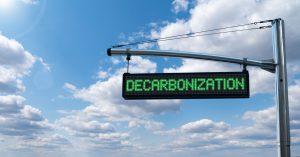Decarbonising steelmaking
This article, one of many NZ Manufacturer will be sharing on the subject, comes as a result of conversations with companies in the steel industry who require information on decarbonising steel and steelmaking.
Seventy five percent of steel is made from high-emissions plants
Nearly three-quarters of crude steel today is made from iron ore in blast furnace–basic oxygen furnace (BF-BOF) plants. These plants release carbon when coking coal is burned and used as a reducing agent.
One key decarbonisation action could be to replace blast furnaces with electric arc furnaces fed by scrap and/or H2-DRI; powering EAFs with 100 percent carbon-neutral electricity would eliminate energy-related emissions.
 Moving to low-emissions production would require $4.4 trillion spending over the next 30 years, with the top end spend coming between 2030 and 2040. In this scenario, three-quarters of investment will likely be on new hydrogen-powered DRI-EAF plants, and the rest to equip existing BF-BOF plants with CCS.
Moving to low-emissions production would require $4.4 trillion spending over the next 30 years, with the top end spend coming between 2030 and 2040. In this scenario, three-quarters of investment will likely be on new hydrogen-powered DRI-EAF plants, and the rest to equip existing BF-BOF plants with CCS.
Thirty percent increase in unit production costs for steel
Costs for steel in the net-zero scenario could increase because of up-front capital spending and higher operating costs associated with CCS and hydrogen-based DRI-EAF production.
Market opportunities
The shift toward net-zero steel production would likely depend on a collaborative effort among regulators, governments, and industry stakeholders to change the economics of production, facilitate access to required capital, and stimulate demand.
First movers that manage the transition risks well stand to gain the most.
Sixty five percent of steel will come from plants with electric arc furnaces in 2050 and there will be a ten percent increase in global demand for steel compared with today.
Getting all the way to net-zero steel
Recent developments in regulations, along with commitment among some governments to reduce CO₂ emissions, have led many steelmakers to set high decarbonisation goals in coming years. While the next decade will likely see carbon-capture process modifications and efficiencies introduced, getting all the way to net zero would require more investment, and potentially an overhaul of the steelmaking process.
Efficiency
Most of crude steel today comes from plants that use the integrated blast furnace–basic oxygen furnace (BF-BOF) process.
It’s possible to reduce the emissions from this process by making certain adjustments, such as maximising the iron content of raw materials.
Most of the technologies needed to boost efficiency are available now, at a competitive cost.
Investment
One option for decarbonising steelmaking is to install carbon-capture equipment at existing steel plants. This would let steel companies continue running their plants without affecting the climate.
Carbon-capture projects at steel plants are still at the pilot stage. It will probably take much more investment to lower the cost of carbon capture enough to make it viable as a large-scale solution.
Innovation
Another approach is to build new steel plants that emit minimal or zero CO₂. These would use a different production route than today’s typical steel plant: utilising green hydrogen (made with renewable electricity) to power the direct reduction of iron ore, which would then be fed into electric arc furnaces (also running on renewable power).



